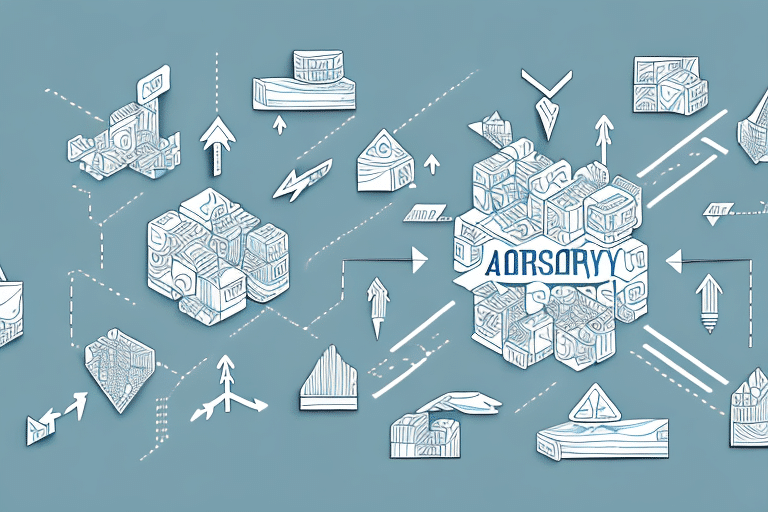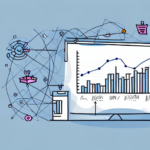Gaining Supply Chain Visibility for Improved Efficiency
Supply chain visibility has become a critical factor for success in today's dynamic business landscape. The ability to track and monitor the movement of goods, materials, and information across the entire supply chain is essential for companies to make informed decisions that optimize performance. This article delves into the various aspects of supply chain visibility, its significance, and strategies to enhance efficiency within an organization.
Why Supply Chain Visibility is Critical for Business Success
Supply chain visibility provides organizations with real-time data and insights about their operations, enabling them to make informed decisions that drive growth. Without visibility, disruptions can lead to inefficiencies and costly delays. Companies with higher levels of supply chain visibility are better positioned to respond to market changes, improve customer service, and enhance profitability.
Risk Identification and Mitigation
One of the key benefits of supply chain visibility is the ability to identify and mitigate risks. Real-time data allows organizations to quickly recognize potential disruptions and take proactive measures to prevent them. This can include identifying alternative suppliers, adjusting transportation routes, or modifying inventory levels to ensure continuity of supply.
Operational Optimization and Cost Reduction
By analyzing data on supply chain performance, organizations can pinpoint areas for improvement and implement changes to streamline processes and reduce waste. This leads to significant cost savings and improved efficiency throughout the supply chain. For instance, a McKinsey report highlights that enhanced visibility can reduce supply chain costs by up to 20%.
Understanding the Different Levels of Supply Chain Visibility
Supply chain visibility can be broadly classified into three levels: operational, tactical, and strategic.
Operational Visibility
Focuses on day-to-day activities such as monitoring inventory levels, tracking shipments, and identifying potential bottlenecks. This level of visibility allows businesses to address immediate issues effectively.
Tactical Visibility
Concerned with optimizing processes and reducing costs. It involves analyzing performance data to streamline operations and implement cost-saving measures.
Strategic Visibility
Encompasses a broader perspective, including identifying new markets, assessing long-term risks, and aligning supply chain strategies with overall business goals. This level supports informed decision-making for future growth.
The Benefits of Supply Chain Visibility for Improved Efficiency
- Enhanced Efficiency: Real-time data access helps identify improvement areas, optimize processes, and increase productivity, leading to reduced lead times and better inventory management.
- Improved Risk Management: Quick identification and mitigation of potential disruptions minimize operational impacts and maintain customer satisfaction.
- Better Collaboration: Sharing data among stakeholders fosters collaboration, reduces costs, and improves overall supply chain performance.
How to Achieve Supply Chain Visibility in Your Organization
Achieving supply chain visibility requires a comprehensive strategy that integrates people, processes, and technology.
Establish Clear Goals and Objectives
Define what you aim to achieve with supply chain visibility, such as reducing lead times, minimizing costs, or improving customer satisfaction.
Identify Relevant Stakeholders
Ensure that all stakeholders understand their roles and responsibilities in achieving the supply chain visibility goals.
Implement the Right Technology
Leverage technologies like RFID, GPS, and IoT devices to track movements. Additionally, utilize cloud-based platforms and data analytics tools to consolidate data and provide real-time insights.
Foster a Culture of Collaboration and Communication
Create an environment where information sharing is encouraged, and establish open communication channels to keep all parties informed and engaged.
The Role of Technology in Supply Chain Visibility
Technology is pivotal in enabling supply chain visibility. Key technologies include:
- RFID and GPS: Track and monitor goods in real-time.
- IoT Devices: Provide continuous data on the condition and location of products.
- Cloud-Based Platforms: Consolidate data from multiple sources for comprehensive visibility.
- Data Analytics Tools: Offer real-time insights and support data-driven decision-making.
According to Gartner, by 2025, 65% of supply chain processes will utilize supply chain visibility platforms, highlighting the growing importance of technology in this domain.
Real-Time Data and Analytics: Enhancing Supply Chain Visibility
Real-time data and analytics are essential for enhancing supply chain visibility. They enable companies to monitor performance continuously, identify bottlenecks, and take corrective actions proactively.
Optimizing Inventory Management
By analyzing data on inventory levels, demand, and lead times, companies can make accurate forecasts, ensuring optimal inventory levels. This reduces costs associated with excess inventory or stockouts and improves customer satisfaction.
Trend Identification and Forecasting
Data analytics tools help identify trends and patterns within the supply chain, providing actionable insights that help companies stay ahead of the competition.
Overcoming Common Challenges in Achieving Supply Chain Visibility
Despite its benefits, achieving supply chain visibility can be challenging. Common obstacles include inadequate technology infrastructure, lack of standardization, and resistance to change.
Investing in the Right Technology
Organizations must invest in scalable and flexible technologies that can adapt to evolving supply chain needs.
Developing Standard Procedures
Establishing standardized procedures and protocols ensures consistency and reliability in data collection and reporting.
Creating a Culture of Collaboration and Innovation
Encouraging collaboration and fostering an innovative mindset helps overcome resistance to change and promotes continuous improvement.
Ensuring Data Accuracy and Completeness
Implement data quality checks and invest in robust data management tools to maintain accurate and complete data. Establish clear data governance policies to ensure data integrity and consistency.
Case Studies: Successful Implementation of Supply Chain Visibility Solutions
UPS: Real-Time Tracking and Optimization
UPS implemented a supply chain visibility portal that provides real-time data on package locations, delivery schedules, and customer feedback. This initiative has enabled UPS to optimize operations, enhance customer service, and maintain its position as a market leader.
Walmart: Enhanced Inventory Management
Walmart introduced a system that tracks inventory levels in real-time, allowing the company to optimize inventory management and reduce stockouts. This has led to significant cost savings and improved customer satisfaction.
Coca-Cola: Monitoring Product Conditions
Coca-Cola deployed a supply chain visibility solution that offers real-time data on the location and condition of its products during transportation. This capability allows the company to identify and address potential issues promptly, resulting in improved product quality and customer satisfaction.
Future Trends in Supply Chain Visibility and Technology
The future of supply chain visibility is poised for significant advancements with the integration of emerging technologies such as blockchain, artificial intelligence (AI), and big data analytics.
Blockchain Technology
Blockchain offers enhanced security and transparency, enabling secure and immutable tracking of goods across the supply chain. This technology can reduce fraud, improve traceability, and facilitate trust among stakeholders.
Artificial Intelligence and Machine Learning
AI and machine learning algorithms can analyze vast amounts of data to predict demand, optimize routing, and identify potential disruptions before they occur. These technologies enhance decision-making and operational efficiency.
Big Data Analytics
Big data analytics provides deeper insights into supply chain operations by processing large datasets to uncover trends, patterns, and correlations. These insights drive strategic planning and continuous improvement.
Internet of Things (IoT)
IoT devices continue to evolve, offering more sophisticated tracking and monitoring capabilities. They provide real-time information on the status and location of goods, enhancing overall supply chain transparency.
In conclusion, supply chain visibility is indispensable for improving efficiency within organizations. By understanding its different levels, leveraging the right technologies, and overcoming common challenges, companies can optimize their supply chains, reduce costs, enhance customer service, and drive revenue growth. As technology continues to advance, the potential for innovation and growth in supply chain visibility becomes even more promising.




















